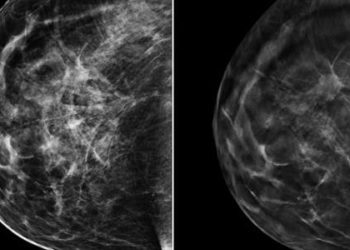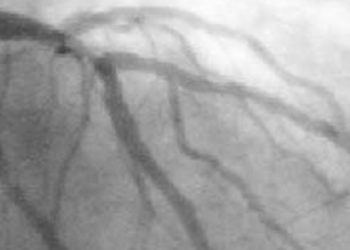2 Minute Medicine Rewind November 14, 2022
Association of Quality and Technology With Patient Mobility for Colorectal Cancer Surgery
1. Around 30% of colorectal patients travel beyond their closest hospital site to undergo a primary bowel resection.
2. For rectal cancer patients, travelling to a more distant hospital site was associated with hospital factors, including presence of specialist colorectal cancer expertise and availability of robotic surgery, but not associated with patient mortality outcomes.
Evidence Rating Level: 2 (Good)
In some countries, patients are able to select which hospital they would like to receive an elective surgery in. Past studies have shown that hospital reputation and availability of robotic surgery are factors associated with individuals travelling farther than their closest health facility to seek out treatment. However, this practice could allow for inequities in the healthcare system, as patients who are younger patients and wealthier are more likely to travel to these centres. As well, it is also unclear if patient outcomes at these centres are factored into individual’s decisions to seek surgery at a location farther away from home. Therefore, this choice modeling study examined the travel patterns and hospital characteristics for patients seeking care for colorectal cancer in the UK. This study included all patients undergoing primary resections for colon or rectal cancer between 2016 and 2019. Hospital factors that were examined in the study included 2-year mortality outcomes, hospital performance, specialist colorectal cancer expertise, availability of both radiotherapy and surgery, availability of robotic surgery, and research impact. In total, 44,299 patients with colorectal cancer were included, with 31,258 having colon cancer and 13,041 having rectal cancer. The study demonstrated that 27.4% and 30.2% of colon and rectal cancer patients respectively had bypassed their closest hospital to receive surgery. For individuals living in rural areas, the percentages were higher, at 29.5% and 33.6% for colon and rectal cancer respectively. Additionally, for colon cancer, there were no significant correlations between any of the hospital factors investigated and the decision to travel to a specific hospital. For rectal cancer however, patients were more likely to travel to a centre with specialist colorectal expertise (odds ratio 1.45, 95% CI 1.13-1.87, p = 0.004), more likely to a centre with robotic surgery (OR 1.43, 95% CI 1.11-1.86, p = 0.007), and less likely to a hospital with an inadequate performance rating as determined by the UK Care Quality Commission (OR 0.70, 95% CI 0.50-0.97, p = 0.03). Furthermore, patients who were older and from lower socioeconomic status (SES) backgrounds were more likely to receive care at their closest hospital, compared to younger patients and those with more advanced disease. Overall, this study demonstrated that about one-third of patients with colorectal cancer seek out hospital centres beyond their own, and that patient mortality outcomes do not seem to affect patients’ decisions to go to a more distant hospital.
1. For healthy elderly patients randomized to take low-dose aspirin for 4 weeks, there was no difference in occurrence of fractures, but a higher occurrence of serious falls prompting hospitalization, compared to patients taking placebo.
Evidence Rating Level: 1 (Excellent)
For elderly patients, falls and fractures are a major contributor to morbidity and mortality with 700,000 deaths associated with falls globally each year. Falls can be attributed to both environmental and physiologic factors, such as bone strength. Although a systematic review has found an association between taking aspirin and lower odds of fracture, this has not yet been investigated in randomized controlled trials. Therefore, the ASPREE-FRACTURE study was initiated in Australia. This was a double-blind trial, comparing fall and fracture outcomes for otherwise healthy individuals aged 70 and older, randomized to take low-dose 100 mg aspirin or placebo, for 4 weeks. The measured outcomes included prevalence of fracture and serious falls prompting presentation to hospital. In total, there were 16,703 participants, 55.0% women, with 8,322 randomized to aspirin and 8,381 to placebo. The median (IQR) age was 74 (72-78) years, and the median follow-up was 4.6 years. The study found 2,865 fractures and 1,688 serious falls. There was no significant difference in the occurrence of first fractures (hazards ratio 0.97, 95% CI 0.87-1.06, p = 0.50) or recurrent fractures (HR 0.96, 95% CI 0.87-1.06, p = 0.40). However, more individuals in the aspirin group experienced serious falls, with 750 (9.0%) compared to 687 (8.2%), which was significantly different (incidence rate ratio 1.17, 95% CI 1.03-1.33, p = 0.01). Overall, this study demonstrated that healthy elderly patients taking low-dose aspirin had no difference in occurrence of fractures, but did have a significantly higher occurrence of serious falls.
1. Total knee arthroplasties (TKAs) done with patient specific instrumentation (PSI) were associated with less OR time and fewer instrument trays used, compared to TKAs done with conventional instrumentation.
2. There were no differences in patient-reported pain and function, or differences in radiologic alignment, when comparing TKAs done with PSI versus conventional instrumentation.
Evidence Rating Level: 2 (Good)
Total knee arthroplasty (TKA) is the gold standard treatment for patients with severe knee osteoarthritis (OA). However, an estimated 20% of patients receiving TKAs are satisfied with the results, with some experiencing pain and limited function. Malalignment may be one cause of this dissatisfaction, and new technologies have been developed to better individualize TKAs, This includes the use of patient-specific instrumentation (PSI), which involves the development of patient-specific cutting guides based on imaging of the patient’s knee. However, it is unclear if the use of PSI affects patient outcomes after TKAs. Therefore, this non-randomized controlled trial aimed to compare patient-reported outcomes, radiologic alignment, and economic factors, amongst individuals undergoing TKA with and without the use of PSI. This study was conducted at 3 centres in Germany, with patients being operated on using PSI and conventional instrumentation in a consecutive manner. Patient-reported outcomes were measured at 6 weeks, 6 months, and 12 months post-op, and included VAS pain score and the Oxford Knee score, which measures knee function. Economic outcomes measured include total OR time (including set-up) and number of instrument trays. In total, there were 139 patients, with 69 undergoing surgery with PSI and 70 with conventional instrumentation. The study found no differences between the two groups in pain scores or Oxford Knee scores, at any of the measured time points. As well, there was no difference in radiologic alignment, with 80.9% of PSI patients and 65.7% of conventional instrumentation patients being within 3 degrees deviation from neutral (p = 0.055). However, the mean total OR time was lower in the PSI group (91.4 compared to 97.1 minutes, p = 0.035), and the median number of instrument trays was also lower in the PSI group (6 compared to 7 trays, p < 0.001). Overall, this study demonstrated that TKAs done with PSI were not associated with significant differences in patient-reported outcomes or radiologic alignment, but were associated with improved economic factors, including less OR time and fewer instrument trays.
1. At 5 years follow-up, rates of target vessel failure were comparable amongst 3 types of drug-eluting stents (DES), in all-comers and patients with diabetes, including Orsiro sirolimus (SES), Synergy everolimus (EES), and Resolute Integrity zotarolimus (ZES),.
Evidence Rating Level: 1 (Excellent)
There are numerous drug-eluting stents (DES) used to prevent vessel failure after percutaneous coronary intervention (PCI), including Orsiro sirolimus (SES), Synergy everolimus (EES), and Resolute Integrity zotarolimus (ZES) eluting stents. The BIO-RESORT randomized trial based in the Netherlands aimed to compare these 3 DES, and found no difference in safety and efficacy at 1 year amongst all-comers. Currently at 5-years follow-up, this study compared the efficacy of each DES amongst all-comers and amongst patients with diabetes. The efficacy was measured in terms of target vessel failure (TVF) occurrence, including myocardial infarction, revascularization, or cardiac mortality. In total, 3514 all-comers were randomized 1:1:1 to the 3 DES, with 3183 (90.6%) available at 5-year follow-up. The mean (SD) age was 63.9 (10.8) years, with 72.5% male. The study found no significant differences in TVF amongst all-comers, which occurred in 12.7% of SES patients, 11.6% of EES patients, and 14.1% of ZES patients (SES vs ZES: Hazards ratio 0.89, 95% CI 0.71-1.12, p = 0.31; EES vs ZES: HR 0.82, 95% CI 0.65-1.04, p = 0.10). As well, there was no significant difference in incidence of stent thrombosis. Amongst patients with diabetes, there were no significant differences in TVF, which occurred in 19.8% of SES patients, 19.2% of EES patients, and 21.1% of ZES patients (SES vs ZES: HR 0.91, 95% CI 0.59-1.42, p = 0.69; EES vs ZES: HR 0.90, 95% CI 0.58-1.40, p = 0.63). Overall, this study showed comparable efficacy outcomes amongst 3 DES types, in both all-comers and patients with diabetes.
1. The use of proguanil/atovaquone amongst individuals with a family history of colorectal cancer (CRC) was associated with a decreased risk of developing CRC.
Evidence Rating Level: 2 (Good)
Individuals who have relatives with colorectal cancer (CRC) have a 2-4 times increased lifetime risk of developing CRC, compared to those with negative family history. Therefore, preventative strategies for CRC have been explored, including drug repositioning. One class of drug that has been proposed is biguanides, known to have anti-proliferative properties, with the drug proguanil found to have the most inhibitory action against colon cancer cells compared to other biguanides. As well, the drug atovaquone was also found to exert anti-cancer activity through inhibiting mitochondrial production of oxygen radicals. Together, proguanil/atovaquone is used as an anti-malarial drug. Therefore, this retrospective cohort study based in Sweden examined the correlation between proguanil/atovaquone exposure with CRC risk, for individuals with CRC in their family history. Health records were accessed from 2005 to 2018, the end of the study period. Every patient that was prescribed proguanil/atovaquone was matched to 10 randomly selected comparisons based on age and sex. In total, 184,987 patients were found to have a first-degree relative diagnosed with CRC. With a mean follow-up of 7.1 years, the study found that the incidence of CRC amongst proguanil/atovaquone exposed individuals was lower than non-users, with 9.32 compared to 12.07 per 10,000 person-years, with an adjusted hazards ratio of 0.76 (95% CI 0.62-0.93). This relationship was also found to be dose-dependent and duration-dependent (p < 0.001). As well, the correlation was greater for more advanced stages of CRC (adjusted HR 0.69, 95% CI 0.51-0.92) as opposed to earlier stages (adjusted HR 0.88, 95% CI 0.65-1.20). Overall, this study showed that the use of proguanil/atovaquone amongst individuals with family history of CRC was associated with a decreased incidence of developing CRC.
Image: PD
©2022 2 Minute Medicine, Inc. All rights reserved. No works may be reproduced without expressed written consent from 2 Minute Medicine, Inc. Inquire about licensing here. No article should be construed as medical advice and is not intended as such by the authors or by 2 Minute Medicine, Inc.







